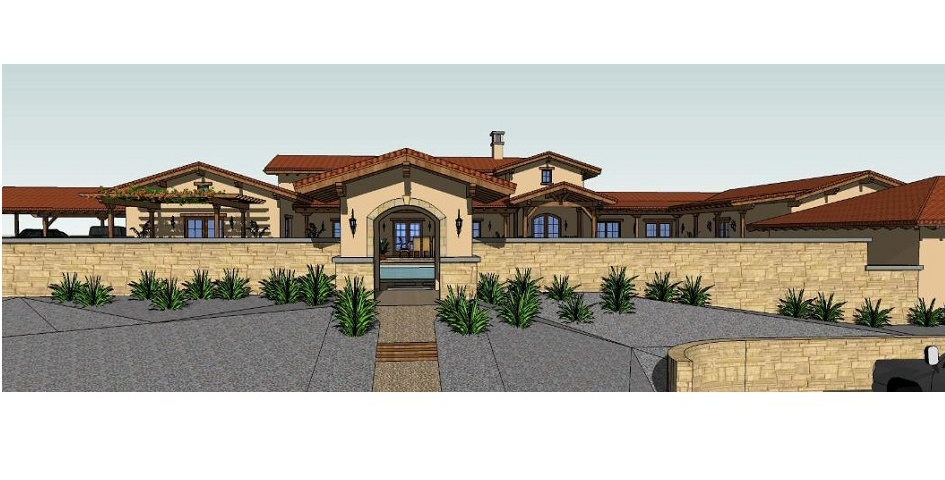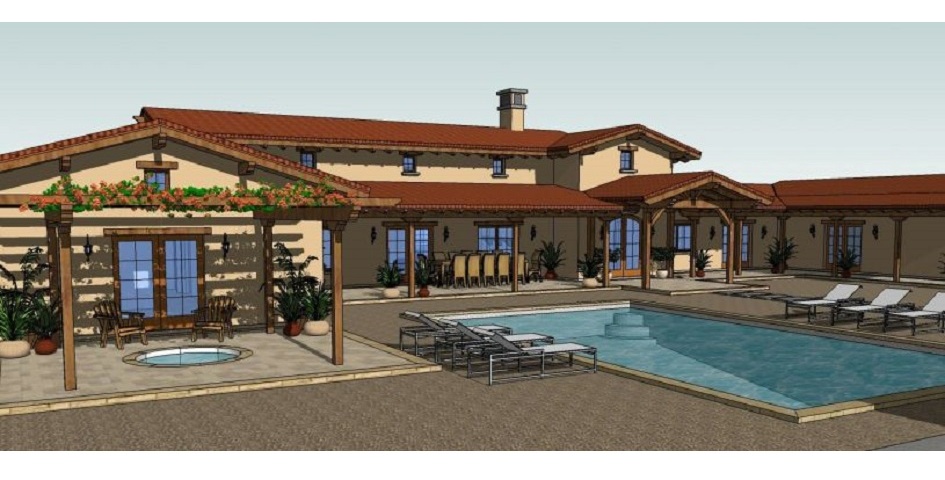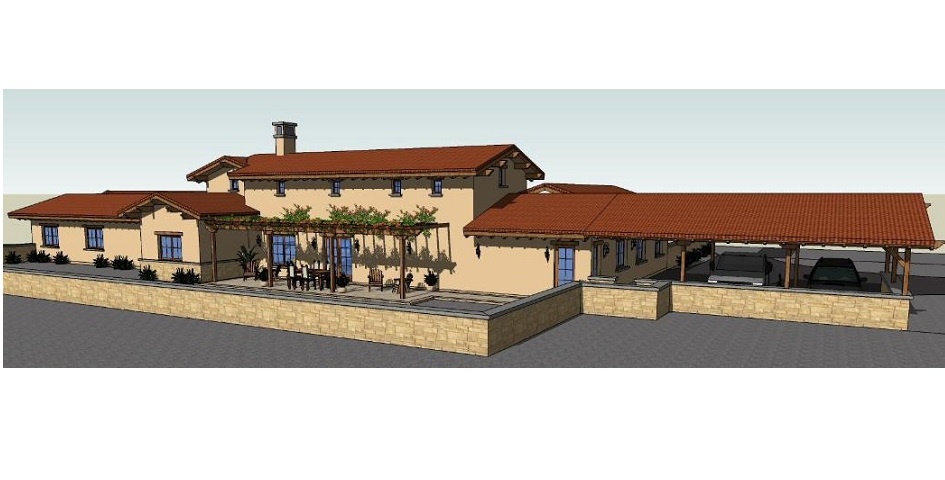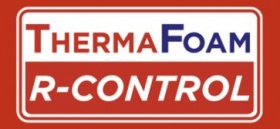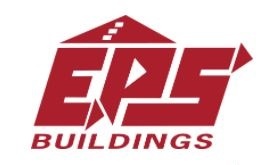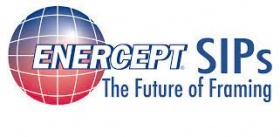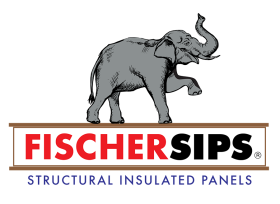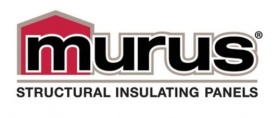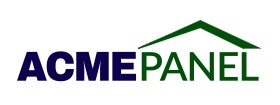Zero Net Energy SIP Hacienda Joshua Tree CA
Location: Joshua Tree, CA
Project Information
| Project Type: | Residential, > 3,000 sq. ft. |
|---|---|
| Manufacturer: | |
| Builder: | |
| Design Professional: | 360 Sustainable - Custom Prefabricated Building Solutions |
| Year Built: | 2018 |
Performance
| High Performance: | No |
|---|---|
| HERS/EUI Index Score: | |
| ACH50 - Blower Test Results: | |
| kBtu/sq.ft./year: | |
| CO2 lbs./sq.ft./year: |
Note: please scroll to the bottom of this page to view additional images of this project.
SIPA member:
360 Sustainable - Prefabricated Building Solutions
P.O. Box 475021
San Francisco, CA 94147
Phone: 1 (415) 490-4809
email: 360sustainable.us@gmail.com
Project information:
Joshua Tree Hacienda
Total conditioned space: 4,300 sq. ft.
Designed by:
360 Sustainable - Custom Prefabricated Building Solutions
P.O. Box 475021
San Francisco, CA 94147
Phone: 1 (415) 490-4809
SIPs Manufactured by: Structall Building Systems
Describe the end use of the building:
This 4,300 sq. ft. home will be the daily living environment for a family of six.
How did SIP construction help you get this job?
The owner lost his house in a fire. He did not want to rebuild in wood frame and was looking for alternatives. He also has a strong interest in Sustainability - with regard to his own lifestyle as well as his family's impact on the Earth. His interests included the construction method, energy efficiency, increased self reliance through off-grid living systems and growing his own food.
The owner researched several prefabricated building methods and finally decided on steel faced SIPs.
Given that this project is the very first steel SIP home in the State of California in which steel SIPs are used in a stand-alone load bearing application, this endeavor required quite a bit of up-front research and invention. We needed to make the steel SIPs structure work with regard to the 2016 California building code, as well as the 2016 California Energy Code. In addition, we had to assist the manufacturer of the steel SIP panels in obtaining the required approvals for use of the panels in load bearing residential applications from the California Department of Housing and Community Development (HCD) and their factory-built housing program (FBH). Despite the existing ICC ES test report, we could not use the owner's preferred steel SIP panels in California without these State approvals.
The California HCD agency promotes and regulates factory-built housing, as well as managing the safety & quality of prefabricated components of houses such as (steel) SIPs. Factory built housing is favored by the State of California as a method to increase the availability of "affordable" housing. Currently, there is a chronic lack.
We successfully assisted the manufacturer in obtaining "factory-built housing program recognition" (FBH) as well as finding solutions for building the owner's home in seismic zone "E" (highest category), and climate zone 14 (one of the harshest in our State), while complying with the 2016 California Energy Code.
Steel SIP construction allowed us to assist the owner with a rapid re-build of his home, and at the same time give him several highly sustainable and energy efficient attributes that come with owning a steel SIP home.
Wall panel thickness: 6" wall panels.
Roof panel thickness: 6" roof panels plus R10 continuous rigid insulation.
Describe the benefits of using SIPs on this project. Did SIPs help to save time, labor construction costs or energy?
The steel SIPs saved the owner significant construction time and significantly reduced the amount and skill levels of the required framing labor. An often overlooked benefit of building with steel SIPs is the added level of predictability of the construction process. With a drastic reduction in the building parts, there is simply less that can go wrong or be misinterpreted from a set of engineering drawings. The bulk of the structural shell elements are pre-planned and pre-cut.
Less parts, less steps, less labor, less specialized equipment, tools and skill required. Less risk for overages and unforeseen issues.
The owner lost his wood frame house in a fire. The steel SIPs allow for extremely fast erection of the dried-in structural shell. The nice thing with steel SIPS is that the panels themselves create a finished watertight and airtight envelope the minute they are installed in-place. You can leave them unfinished depending on the type of project and preference. This allows other trades to start on rough-in plumbing electrical and finish work quicker.
Although any other desired finish can be installed over the steel skins, various colors and finish textures/patterns are available for the finished & coated exterior skins of the panels. The owner can use lower skilled, and less labor as the steel SIP panels are very light. In addition, the variety we used snaps together (no need to screw of individual panel joints, no splines). The panels are available in up to 35-foot lengths.
California has one of the most stringent energy codes in the Nation, and with the steel SIPs we were to accomplish a compliance margin of 32.6 % over the current minimum passing standard required by the 2016 California Energy Code, making this home a Zero Net Energy home (ZNE) before its time.
Describe any innovative design elements or structural engineering involved:
We had (3) challenges with this project:
a) The home is located in seismic zone "E" - the highest in California. The steel SIP panels capacity to resist lateral forces from earthquakes is up to seismic zone "B" if used as a shear panel. To remedy, we developed special cold formed steel detailing, which was of a level of simplicity that it did not add significant cost to the overall project. We were able to accomplish a simple remedy mainly because the steel SIPs are very light in contrast to other types. Lighter structure, lighter foundation, lighter & cheaper lateral resistance measures required. In comparison: The same design in wood frame would have required several red structural steel moment frames, adding a significant amount of cost for the owner.
b) California Title 24 Energy code compliance: Although the steel SIPs themselves do not pose any significant thermal bridging issues, in combination with their thermally broken wall base channels, and wall caps, we developed special (but surprisingly simple) cold formed steel detailing to create a "good marriage" between what we needed to do to meet seismic design requirements (cold formed steel shear panels, drag beams, other cold formed steel elements) and preventing thermal bridging to meet the requirements of the 2016 California Energy code. Finally, working closely with our Energy code consultant, and the structural engineer, we were able to reach a respectable 32.6 % compliance margin OVER the minimum required 2016 Energy Code Standard, making this project a Zero Net Energy home (ZNE) before its time (NOTE: the 2019 Code cycle will require an additional 30% increase of energy efficiency over the current 2016 California Energy Code minimum compliance standard).
c) High wild fire zone: This project is located in a high wild fire zone and is subject to the requirements of chapter 7A of the 2016 California building Code. The nice thing about steel SIPs is that there are typically no attics to vent. As such, we did not have to consider special flame and ember resistant roof vents, nor (prohibited) eave vents. Depending on type & location of the building, and proximity to other buildings, or lot lines, the continues water & airtight 26 gage steel skin exterior forms a non-combustible barrier to flying flames and embers. That nor-withstanding, we did use and exterior stucco finish which created a 60-minute thermal barrier on the exterior, and we were given the option to use 1/4" hardi panel in the eaves.
HERS Index:
The project's building energy analysis report showed that the project complied by a margin of 32.6% over the minimum required standard as mandated by the 2016 California Energy Code
Describe the HVAC system used in the project:
The super insulating airtight steel SIP building envelope allowed us to both heat and cool the entire single level 4,300 sq. ft. structure with ductless mini-split heat pumps. The increased modern-day quality and efficiency of these types of units and their economical price tag, saved the owner the expense of constructing metal stud and drywall soffits for sheet metal or other ducting leading to supply registers and return air registers.
Due to the super insulating building envelope, we did not need very many split units and were able to accomplish secondary saving for the owner in equipment cost verses a traditional gas furnace with ducts.
Describe any other energy-saving materials used in the building envelope other than SIPs. List U-values of windows used and the R-value of any insulation materials:
The buildings energy analysis report required that we use R-8 rigid insulation on the exterior face of the cold formed steel shear panel inserts that occurred in some places in the exterior SIP walls. These shear panel inserts were then filled on the inside with closed cell expanding spray foam. Although it was not required to meet the minimum performance requirements per the 2016 California Energy Code, we elected to install R-10 continuous rigid slab edge insulation per the owner's wishes.
We also elected to install R-10 continuous rigid insulation over the top of the steel SIP roof panels due the desert location of the project near Joshua Tree National Monument.
All windows had to meet the prescriptive performance values of .32 U-value and .25 SHGC per the building's energy analysis report based on the requirements of the 2016 California Energy Code.
List any energy-efficient products or design features such as lighting, hot water heating, appliances and passive solar:
We implemented a number of passive solar design features in this home. Numerous operable openings located high in the tallest spaces allow hot air to escape, mimicking the effects of thermal tower. Hot air escaping on top crates a vacuum in lower parts of the structure where cool fresh air is sucked in. "Natural air conditioning" is accomplished this way on days which normally require mechanical air-conditioning to be used.
We also made an effort to strategically locate windows and shade elements (electrically operable shade screens, overhangs, porches and trellises). This optimizes "solar gain" impact on the structure minimizing solar gain in the Summer and maximize in the Winter when the free energy of the sun can accomplish free passive heating.
The same goes for natural lighting & ventilation; we attempted to strategically place windows, and skylights based on the geographical orientation(s) of the home and take optimal advantage of natural lighting by the sun and minimize the need for electrical lighting.
Lastly, this home features several Panasonic spot ERV-s (Energy Recovery Ventilators) spaced throughout the home. SIP buildings are very airtight, and electric ventilators are recommended to make up for fresh air that normally comes in through cracks & gaps in older less airtight buildings.
The ERV ventilators suck out stale (but conditioned) warm or cold air, which is wasteful. The energy recovery ventilators (ERV) minimize this wasting by pushing the stale (heated or cooled) air through a vent pipe which runs parallel to the vent pipe bringing in fresh unconditioned air. This "meeting" of pipe-separated air stale/fresh streams accomplishes an exchange of energy; the fresh air coming in is pre-heated, or pre-cooled, which reduces the amount of energy otherwise needed to condition it.
For hot water heating, there is a solar boiler with storage tank, and we are using heat pump style electric water heaters (in contrast to the old fashioned electric resistance type). All faucets in the house are fitted with wireless motion sensors. When motion is detected near a faucet, a re-circulation pump at the electric water heater is activated to minimize the amount of cold tap water that runs down the drain before hot water reaches the faucet.
Were any solar panels installed on the project?
This home will have a 6KW solar electric system.
Note: All content, video, photography and images below are the property of 360 Sustainable Inc., All rights reserved. Unauthorized use prohibited.

